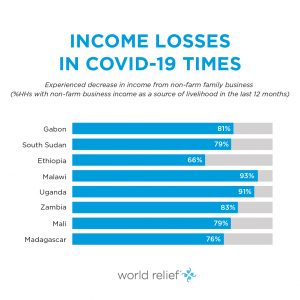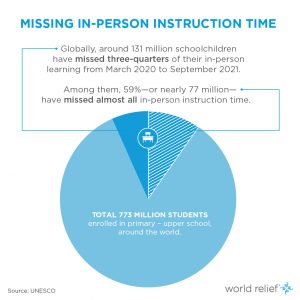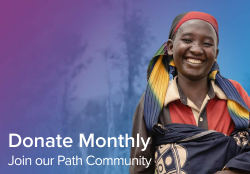Over the past two years, COVID-19 has grown into one of the greatest humanitarian issues in recorded history. In this report, we lay out the devastating effects economically, socially, emotionally and physically, and how we can respond with compassionate, thoughtful action.
Overview
From 1990 until 2015 we witnessed a consistent downward trend of global poverty rates, from nearly 36% to just 10% of people at the extreme poverty level living on just $1.90 a day. COVID-19 changed everything, and today 97 million more people were pushed into poverty as a result of COVID-19. Globally, “three to four years of progress toward ending extreme poverty are estimated to have been lost.”

Food Insecurity and Livelihoods
Expectations from the start of the pandemic showed that the number of people facing acute food insecurity would nearly double to 265 million by the end of 2020. But forecasting today predicts that acute food insecurity is likely to deteriorate even further in 20 countries of West Africa alone. Young children globally are bearing the brunt of the devastation, with 50 million suffering from wasting (low weight-for-height). There is virtually no aspect of livelihood and employment that COVID-19 has not interfered with.
Healthcare
Throughout Africa, the pandemic has disrupted critical health services and undermined years of progress fighting other deadly diseases, including HIV, TB and malaria. And COVID-19 vaccine distribution, education and availability have been a problem. Poorer nations rejected more than 100 million doses of COVID-19 vaccines in one month alone because of insufficient storage facilities, vaccine hesitancy and overburdened healthcare systems.
Women & Children

The devastating impact of COVID-19 on women and children cannot be overstated. Women typically earn less, have less access to social protections and make up most single-parent households. Along with rising rates of poverty come other major concerns, one of which is the “shadow pandemic”— violence against women. The number of children affected by COVID-19-associated orphanhood and caregiver death is estimated to have increased by 90% in just six months. Globally, schoolchildren have lost over 1.8 trillion hours of in-person learning, and only 1 in 10 students in the poorest countries have internet access, making remote learning inaccessible.
World Relief Responds
World Relief has been responding since the early days of the pandemic, launching an online information and support platform, providing community mobilization about COVID-19, delivering vaccinations and providing livelihood support, child protection and health services.

